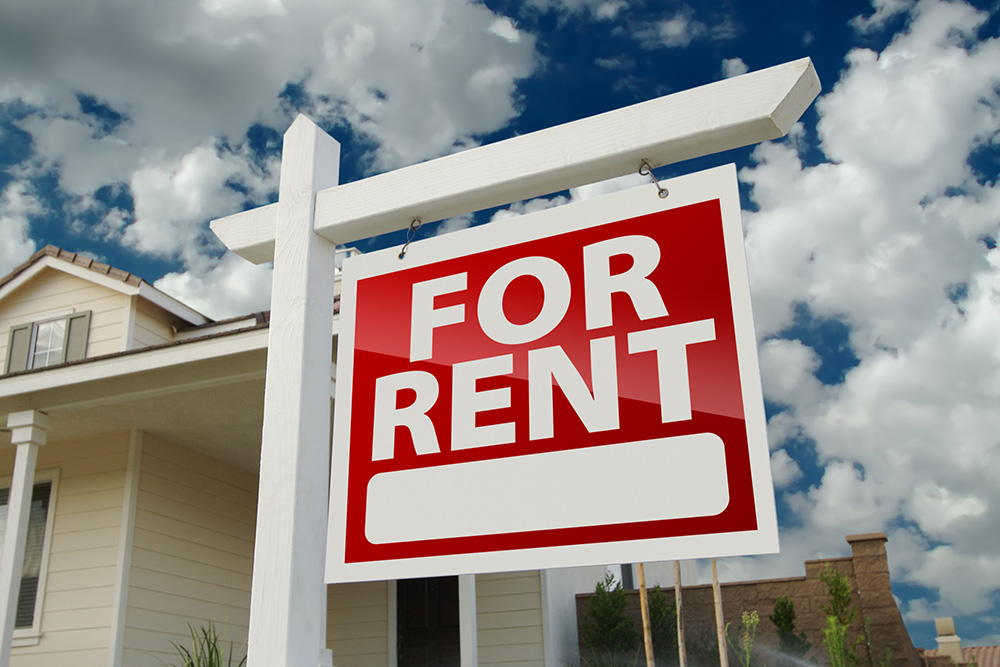Study: Wall Street’s Home-Market Move Has Ups, Downs for Renters
By: Brittany Magelssen | May 6, 2022

While neighborhoods with corporate landlords tend to experience higher rent prices, they also see an increase in neighborhood quality and safety, according to a recent study from researchers at The University of Texas at Dallas.
Dr. Umit Gurun, Dr. Steven Xiao and management science doctoral student Serena Xiao of the Naveen Jindal School of Management examined the recent rise of institutional investment in the single-family home rental market and its implications for renters’ welfare.

The study was published online March 18 in the The Review of Financial Studies. Dr. Jiabin Wu of the University of Oregon is a co-author of the paper.
“Large-scale investment in the single-family rental space has grown rapidly since we started this project,” said Dr. Steven Xiao, assistant professor of finance and managerial economics and corresponding author of the study. “The single-family rental market has gradually transformed from a traditional mom-and-pop business into a new investment asset class that offers attractive, stable returns for institutional investors.”
The researchers aimed to provide an objective assessment on the impact of institutional landlords on rental markets using large-scale data and rigorous empirical analysis.
Institutional landlords have been criticized in the media for their business practices, and these criticisms are mostly based on interviews with renters, said Steven Xiao.
The foreclosure crisis that occurred between 2008 and 2010 forced millions out of their homes, and private equity firms acquired many of the properties, refashioning them as rentals. By 2016, institutional investors had acquired more than 200,000 foreclosed homes.
The large number of foreclosures offered a rare opportunity for institutional investors to buy single-family homes at a discount and build their portfolios, Steven Xiao said.
While mom-and-pop investors historically continue to dominate the single-family rental market, activist groups have raised concerns that corporate landlords will make these homes less affordable and offer housing of questionable quality.
Serena Xiao said policymakers have been hesitant to support financially the institutionalization of single-family rentals.
“We believe our findings provide a more nuanced picture of the role of institutional landlords,” she said. “On one hand, they have raised the cost of renting, but on the other hand, landlords appear to play a beneficial role in crime reduction and amenity improvements.”
To study the impact of institutional landlords, the researchers created a model to formalize the mechanisms through which the creation of a large landlord through a merger might affect average rent prices and neighborhood safety.

The researchers then examined the causal effect of institutional ownership on rents and neighborhood quality using the three largest mergers of institutional single-family rental investors from 2015 to 2017.
The three mergers created American Homes 4 Rent and Invitation Homes, the two largest institutional single-family rental investors in the United States. According to 2018 data, the two companies own more than 130,000 single-family homes in the U.S. — more than half of the institutional single-family rental market.
The analysis used data on real estate transactions from Zillow’s Transaction and Assessment Database and neighborhood rental prices from Zillow Rent Index. Crime data came from the LexisNexis Community Crime Map.
Effects on Rent Prices
The analysis found that rent prices increased in neighborhoods where both merging firms owned properties, also known as overlapped neighborhoods, compared to neighborhoods that did not overlap.
In overlapped neighborhoods in which each of the merged firms gained more than five properties after their merger, rents increased 0.51% more than in nonoverlapped neighborhoods.
The researchers also found that properties owned by the merged landlords charged higher rents compared to those of other single-family rental homes in the same neighborhood. Selling prices of homes in the overlapped neighborhoods also eventually increased.
Serena Xiao said the rental market price is a joint outcome of demand and supply.
“We believe our findings provide a more nuanced picture of the role of institutional landlords. On one hand, they have raised the cost of renting, but on the other hand, landlords appear to play a beneficial role in crime reduction and amenity improvements.”
Serena Xiao, management science doctoral student at UT Dallas
“When potential renters notice the improvements in neighborhood safety, they will be willing to pay a higher rent for these homes,” she said. “However, the rent increases that we observe immediately after the merger completions are unlikely to be driven by the demand side because it should take some time both for the neighborhood quality to improve and for potential renters to notice these improvements.
“We believe these immediate rent increases are more likely driven by the supply side — that is, the merged landlords raised the listed price as soon as they gained pricing power from the enhanced market share.”
Impacts on Quality, Safety

To study the effect on amenity provisions, the researchers examined data on the density of streetlights, hiring of security guards and property-level rental listings.
After the completion of the mergers, overlapped neighborhoods in which merged firms gained more than five properties experienced a 5.23% decrease in crime in the following year compared to nonoverlapped neighborhoods. This includes decreases in burglaries (3.03%), thefts (4.64%) and vandalism (3.43%).
The study found the decreased crime rates were not due to weakened enforcement or crime being displaced into neighboring areas. Rather, the findings suggest that institutional landlords improve the quality of rental services by enhancing neighborhood safety. Hiring of private security guards ramped up in overlapped areas, and streetlight density increased.
Landlord mergers also appear to reduce resident turnover, which stabilizes the affected neighborhoods.
In addition to informing policymakers, the research also has implications for consumers in the market for a home.
“Based on our research, our recommendation for potential homebuyers and renters would be to pay attention to the density of homes in the neighborhood that are owned by the same landlord,” said Gurun, Ashbel Smith Professor of accounting. “Institutional landlords have more incentives to work on neighborhood amenities when they have more homes in the neighborhood, and their investments will benefit everyone living in the area.”
Steven Xiao said the institutional single-family rental business has continued to boom during the COVID-19 pandemic, and institutional investors have continued to develop new strategies, such as build-to-rent homes. The researchers plan to study various social and economic impacts of this trend.
Media Contact: Brittany Magelssen, UT Dallas, 972-883-4357, brittany.hoover@utdallas.edu, or the Office of Media Relations, UT Dallas, (972) 883-2155, newscenter@utdallas.edu.





